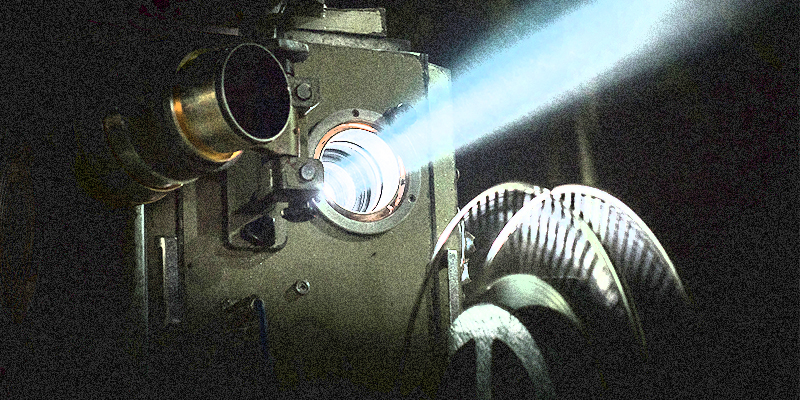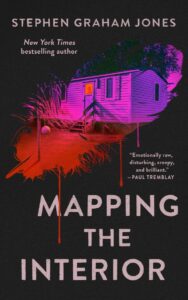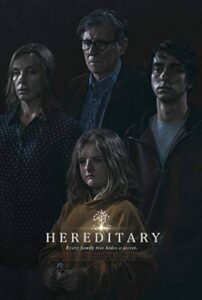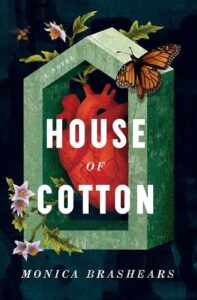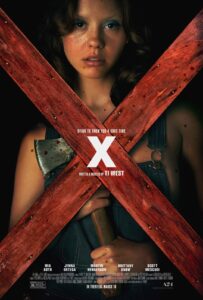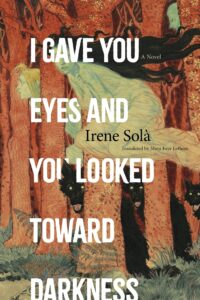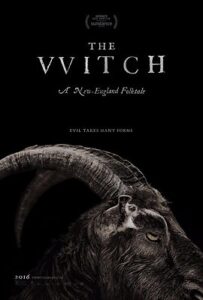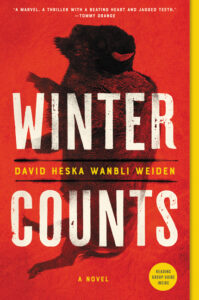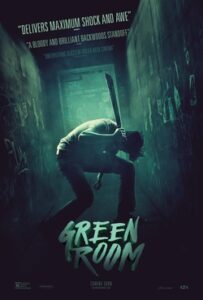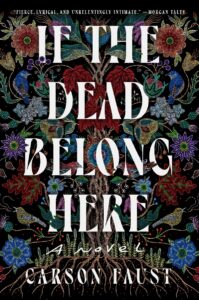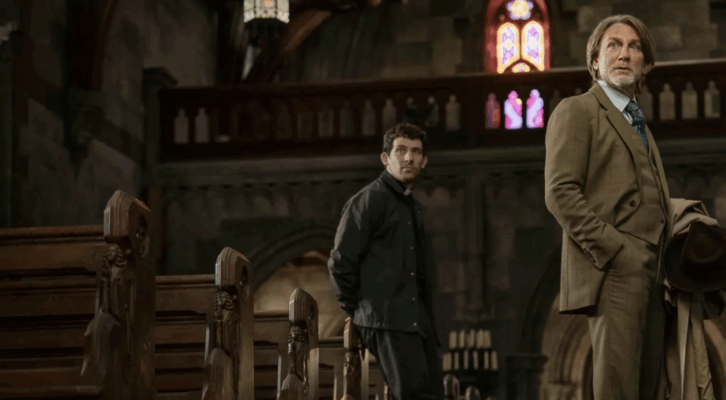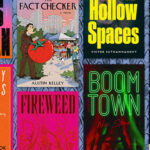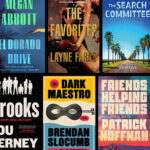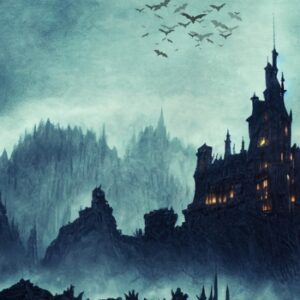Horror is an expansive genre that allows people to see the world in new and frightening ways. It holds a mirror to ourselves. It can hold a mirror to all that surrounds us. It can be a window into worlds we can’t always see. Horror is a genre of possibility: What can it mean if our grief is given a solid form? What can the hauntings and paranoias in our histories tell us about the world we live in now? What must we do, and who must we become, to survive the unthinkable?
These are all questions that are explored in recent horror novels, but also in A24 films. A24 is a production company known for their arthouse films that blur genre, take risks, and often unspool our most unsettling thoughts and emotions. Because horror often courts the unsettling, A24 has become known as a innovative and trusted producer and distributor of unique, challenging, and beloved horror films across the twelve years they’ve been in operation. When I’m looking to be inspired by visual media with deep character work, I often turn to A24 films to remind myself of all the ways genre can be blurred.
As I wrote my debut novel, If the Dead Belong Here, I found myself interested in the way that genres interact with one another: horror, thrillers, drama, and mysteries. In this Native American Southern Gothic novel, a family unravels following the disappearance of six-year-old Laurel Taylor. In their search for answers, for closure, the family must find their own ways of untangling their present, their past—all while confronting the ghosts that flicker in that in-between space. The situations that arise in horror narratives often allow for explosive emotion. Horror allows emotions to remain heightened. The deeper and darker moments allow you to see the unvarnished versions of people. They also require characters to find and create new ways fostering hope.
Of course, there are contemporary authors I turn to when I’m looking for horror and thrillers that explore complex emotions, histories, and themes. These are just a few works that have stirred me in the same way that many of A24’s horror films have.
If you are drawn to the familial grief in Ari Aster’s Hereditary, then you should find your way through Mapping the Interior by Stephen Graham Jones.
Haunted places, especially homes, are often just extensions of the haunted people who inhabit them. Ari Aster’s feature length film debut Hereditary follows one family through heavy, compounding grief as a mother and her son lose relatives to increasingly strange circumstances. As uncanny and unsettling as these loses are, nothing here is accidental—and this intentionality only feeds the mystery. Hereditary is deeply layered in its exploration of fraught maternal relationships, complex dynamics between siblings, and the ways familial love and inheritance can distort us into unrecognizable shapes. Sometimes, as in Stephen Graham Jones’s novella Mapping the Interior, it is the haunted house itself that takes on unrecognizable shapes. This novella follows a young Native American boy named Junior after the loss of his father. At night, Junior begins seeing the shape of his father move through the home he shares with this mother and brother. As the certainty that his father is gone continues to diminish, Junior finds that the physical interior of his home is just as uncertain. As he tries to map it out, the structure becomes even more unclear—all while the cost of his father’s return becomes more apparent. Mapping the Interior and Hereditary show us that sometimes our relatives become more real after they pass on. And that their leaving can have terrible consequences, but so can their returning.
If the exploration of power and desire in X by Ti West tempted you, then you should enter Monica Brashear’s House of Cotton.
Often, it is the unknown that terrifies us. But horror also teaches us that things as knowable as our own desires can be just as terrifying. The pursuit of desire and pleasure is the starting point for the characters in Ti West’s X. In the late 1970s, a crew of young filmmakers set off to a farmhouse in rural Texas to make an adult film. As the filming goes on, tensions between the filmmakers and the elderly residents of the farm grow—as do tensions between the crew themselves. All of these tensions stem from desire and jealousy as characters discover who they are, who they wish to be, or who they wish they had been in their younger days. If X shows audiences how fantasy is constructed, then Monica Brashears’s House of Cotton immerses readers directly into fantasy. This Affrilachian gothic follows Magnolia Brown, a broke nineteen-year-old who is offered a modeling job by a mysterious and eccentric man—for whom she poses as strangers’ deceased loved ones. With lush, ethereal prose, Brashears takes readers through a fever dream of fantasies both sexual and folkloric in a novel that is unafraid to hold a mirror to the darker parts of our psyches and our histories. House of Cotton shows us the lengths we will go to survive and—perhaps most importantly—to feel alive. X and House of Cotton invite us to look deeper at those moments when looking within ourselves gets our blood running fastest.
If the folkloric horror of The VVitch by David Eggers transfixed you, then you should read I Gave You Eyes And You Looked Toward Darkness by Irene Solà.
There are those who believe the devil can take many forms. For some, our own communities can become one of those forms. In David Eggers’s feature film debut, The VVitch, a banished and isolated Puritan family is beset by dark forces and begins to unravel. Set in the early 1600s, a young girl Tomasin is blamed for the mysterious disappearance of her infant brother, causing rifts between her, her parents, and her siblings. These rifts also exacerbate Tomasin’s frustrations with the roles she’s expected to take on as a daughter, a sister, and a young woman in this insular, patriarchal structure. The VVitch explores how Tomasin might be able to escape these structures—and what her freedom might cost her. Much like The VVitch, Irene Solà’s novel I Gave You Eyes And You Looked Toward Darkness is both taut and expansive. Deep in the mountains of Catalonia, a farmhouse full of witches and spirits sees bandits, beasts, and demons move through time and space. Over the course of a single day, and through the voices of generations of witches who haunt this house, Solà’s characters paint their world richly with folklore, history, and deep memory. Solà leads us through tangled lineage and slippery pacts with the devil, curses, and heartbreaks—trusting us with a great deal of darkness and violence. At the heart of both of these works is the hard-earned resilience of women throughout history. And all that women have had and must continue to do in order to find themselves and make their places. If The VVitch immerses us in history, then I Gave You Eyes And You Looked Toward Darkness lets history pass through us.
If the stark violence Green Room by Jeremy Saulnier appeals to you, then you should read by Winter Counts by David Heska Wanbli Weiden.
Thrillers are fertile ground to bring repressed fears, anxieties, and uncomfortable truths to the surface. Jeremy Saulnier’s film Green Room, a punk band must fight to escape a neo-Nazi bar after witnessing a murder. In the aftermath, as the neo-Nazis close ranks in an effort to kill the protagonists, we are shown how the bonds of hate can drive people toward toxic loyalty and deplorable actions. The film is propulsive, violent, and tense—never shying away from the heinous acts that the neo-Nazis inflict nor the acts the protagonists must commit to survive them. David Heska Wanbli Weiden’s Winter Counts offers a similar intensity—underrepresented themes like police brutality, drug abuse, assaults, and the ways in which the United States government fails Native American peoples are brought to the page with vivid and unflinching detail. This novel follows Virgil Wounded Horse, a local enforcer on the Rosebud Indian Reservation in South Dakota, who brings vigilante justice when other systems fail to deliver. Broken people and systems fail those who needs justice most and Virgil begins to uncover how layered atrocities are connected. Both of these works bring attention to the bleak complexities of our lives and our communities. They also invite us to imagine ways of fighting them off, leveraging any means necessary.
If the ritualistic horror in Midsommar by Ari Aster calls to you, then you should read Dominion by Addie Citchens.
Aesthetic beauty and the comfort of familiarity can sometimes prevent us from seeing or feeling mounting horrors. Light refracting through a stained glass window can distract from what can happen in the shadows of a church just as beautiful adornments can pull focus from harrowing rituals. Ari Aster’s follow-up to Hereditary is aesthetically bright, inviting, but just as disturbing as its predecessor. Midsommar follows an emotionally turbulent couple, Dani and Christian, to a rural town in Northern Europe as they partake in an ancient festival. Their idyllic surroundings become increasingly nightmarish as a pagan cult immerses them in their ritualistic practices. As the narrative unfolds, we find ourselves questioning whether Dani and Christian become more themselves after reaching their breaking points—or if they succumb to the whims of the cult that surrounds them. Addie Citchens debut novel, Dominion, explores similar themes: the darkness that a polished artifice can obscure, toxic masculinity, and the ways people process or succumb to trauma. Set in Dominion, Mississippi, Citchens’s story follows the family of Reverend Sabre Winfrey—a man who holds great influence over every aspect of the place he resides. Over the course of the novel, the shimmering veneer of the characters’ lives gives way to complicated relationships and disturbing acts of violence. Both works show how rituals often thought to honor one another and bring out our better angels sometimes yield and perpetuate our darkest impulses.
***

